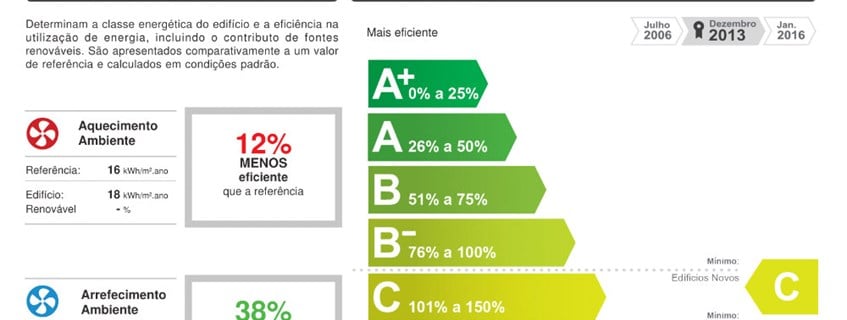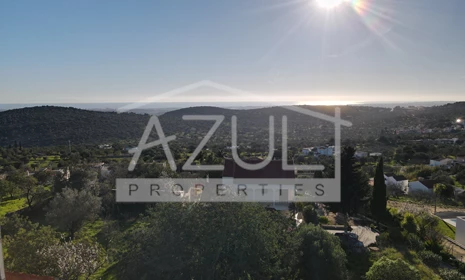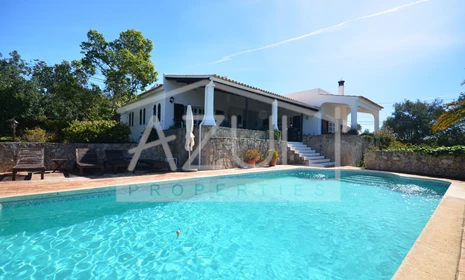
Energy certificates in Portugal
Introduction
When you are looking for a property that is for sale or offered for rent in Portugal, the energy certificate classification will be shown on any advertising. Many people think that they just need to look at the rating (which is shown on a coloured scale from A (best) to F (worst)). However, whilst the rating of the certificate is a good initial guide as to the energy efficiency, the certificate needs to be examined in detail to understand the full picture, as it contains some other useful information.
Old houses versus new build
All newly built properties have to achieve a rating of A or better. This ensures that (based on the criteria used to create the certificate) all recent properties should meet a reasonable standard of energy efficiciency. When the engineer surveys the property to calculate the energy rating, he has accurate information relating to the construction methods used, so the certificate does represent the actual construction (if the property has been built in accordance with the construction project).
When assessing an older property, the engineer has to estimate the type of construction, as it is impossible to know how the building was constructed. These estimates are based on the age of the property (and the construction methods used at that time), and are normally pessimistic, so as not to over estimate the energy efficiency of a building. Unfortunately this is one of the severe limitations of the energy certificate, as a property that was very well insulated (or has been reinsulated since it was originally built) will have the same energy rating as a poorly insulated building of the same age. In many cases the energy rating can be misleading.
Clearly when you are purchasing an older property you should not just focus on the energy rating, but look at the other details contained within the energy certificate.
Energy certificates-the details
A typical certificate is divided into 14 sections, and we will give a brief explanation of each one. An example of an energy certificate can be downloaded at the bottom of this page under the heading "Downloads". This example has been edited and titles have been added for each section, to allow you to have a clearer understanding of each section.
Section 1-The property
The introduction to the certificate includes a photo of the property, its address, details of the land registration and tax office certificate and the total floor area.
Make sure that the photo on the certificate is the same as the property you are purchasing or renting!
Section 2-Energy estimates
This section explains the estimated amounts of energy necessary to heat the property (aquecimento), cool the property (arrefecimento) and to provide hot water (água quente sanitária).
On the left hand side the amount of energy needed to achieve the baseline average value is given (referência), the amount this property will use (edifício) and the amount produced by renewable energy (renovável).
On the right hand side are 3 boxes that show if the value for this property is less efficient than the baseline (menos eficiente) or more efficient (mais eficiente).
Obviously, the more efficient, the better.
Section 3-The headlines
This section shows the overall rating of the property, from A+ to F. It alsos shows two useful statistics, at the bottom of the section:
- Amount of renewable energy that the building will use
- Tonnes of CO2 that the building will produce in one year
Section 4-Property details
Within this section you will find a brief description of the property, its surroundings, solar orientation and systems for cooling, heating and hot water.
Section 5-Thermal performance
A simple table describes the thermal performance of walls (paredes), roofs (cobertura), floors (pavimentos) and windows (janelas). Each element has a brief description, and then a rating (from 0 to 5 stars) to illustrate how well each element will insulate the property.
It is important to note the small print in this section, which states that when it is not possible to prove that elements have insulation, it wil be assumed that they do not. So if a building has a new roof, with extensive insulation, but this can not be proved, it will not be consdidered.
Section 6-Heat gains and losses
There are two useful graphics in this section, which illustrate how and where heat will be lost and gained in winter (inverno) and summer (verão). You can see if the property in question is better (melhor) or worse (pior) than the baseline, and how much better or worse it will perform.
Section 7-Possible improvements
This is probably the most important section of the certificate if you are purchasing an older property. Within this section there are recommendations on how to improve the energy efficiency of the property.
A short description of each proposal in included, and then there is a table which indicates (from left to right) the cost of the works (custo estimado....), how much you can reduce your annual electricity costs (redução anual....), and what the energy rating would be if the measures suggested were implemented (classe energética após medida).
There is a summary that confirms the total cost of all measures (custo total....), the annual reduction in energy costs (redução anual....) and the energy rating after all measures were implemented (classe energética após medida).
This is followed by a note in relation to the importance of selecting technical systems correctly for a property.
Section 8-Definitions
Within this section an explanation of common definitions is given.
Section 9-Miscellaneous
The details of the engineer who completed the certificate and its date of issue, together with a chart showing the distribution of energy certificates across all properties are contained here.
Section 10-Notes
This section contains general notes, but also a list of the documents used to complete the certificate.
Section 11-Detailed considerations
From this point onwards, there is a lot of technical information contained within the certificate.
This section gives a detailed summary of the calculations completed by the engineer, together with the climate conditions considered.
Section 12-Structure
There is a lot of detailed information in this section, in relation to the thermal performance of walls (paredes), roofs (coberturas), floors (pavimentos) and thermal bridges (pontes térmicas planas).
Within each section there is a description of the construction, the size in m2 of the element and it´s solar orientation, its thermal performance (expressed in W/m2 ºC and with a star rating). The baseline rating is also included as a comparison.
When looking at the coefficient of thermal performance, the lower the figure, the better the thermal performance.
An important part of this section is the recommendations on how thermal performance can be improved (medida de melhoria).
Section 13-Windows and doors
Details of the windows and doors are contained within this section, along with their thermal performance. The format of this part of the certificate is the same as the previous section.
Section 14-Heating, cooling and hot water systems
Again this section follows the same format as the previous two sections.
There are descriptions of the systems installed for heating and cooling, ventilation and provision of hot water.
Exemptions
The energy certificate is a mine of information, and should (nearly) always be provided. There are genuine exemptions for certain very specific cases, whereby an energy certificate is not required.
- Ruins. A ruin (obviously) does not need a certificate, however it must have a declaration from an engineer to confirm this.
- Small properties under 50m2
There is sometimes a tendency for properties to be advertised for sale or rent and shown as being exempt from having an energy certificate, even when they should have one. This is unacceptable, and real estate agents/property owners are not allowed to advertise properties that do not have valid certificates.
Conclusion
The energy certificate contains a lot of information, some of this is of use to most people, whilst some is more technical and will not help many purchasers or tenants.
One of the very important points that must be stressed is that when looking at an energy certificate, you should not just look at the rating. If you think the rating is not as good as you would expect, read the whole certificate and see why the rating has been given.
One of the most useful parts of the certificate is the the proposed upgrades, their costs and effect on the rating. You may be surprised how simple it can be to improve the energy efficiency of a property.
If you have any questions in relation to energy certificates in Portugal, please send us an email

